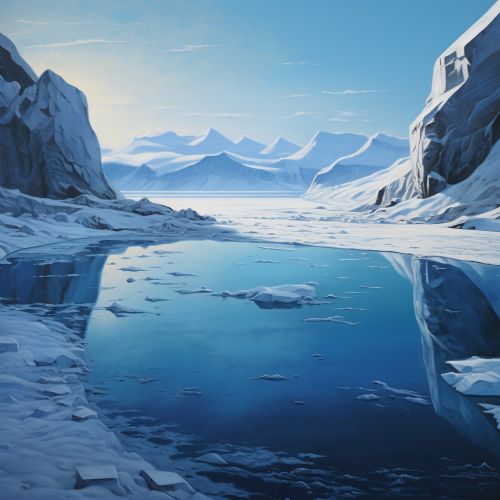Subglacial Lakes and Life in Extreme Environments
Introduction
Subglacial lakes are bodies of water that exist beneath the surface of ice sheets and glaciers. These unique environments are isolated from the atmosphere for thousands, and in some cases, millions of years. Despite the extreme conditions, life has been found in these lakes, demonstrating the resilience of life in extreme environments.


Formation of Subglacial Lakes
Subglacial lakes form when heat from the Earth's interior melts the base of the ice sheet. This heat, combined with the pressure exerted by the overlying ice, creates a layer of liquid water beneath the ice. The water is prevented from freezing by the pressure of the overlying ice and the insulating effect of the ice sheet itself. The largest and most well-known subglacial lake is Lake Vostok, located beneath the East Antarctic Ice Sheet.
Life in Subglacial Lakes
Despite the extreme conditions, life has been found in subglacial lakes. These organisms, known as extremophiles, are adapted to survive in conditions of extreme cold, high pressure, and complete darkness. The discovery of life in these lakes has important implications for the search for life on other planets, particularly extraterrestrial bodies with similar conditions such as Europa, a moon of Jupiter.
Adaptations to Extreme Environments
Life in subglacial lakes has evolved unique adaptations to survive. These include the ability to withstand extreme cold, high pressure, and a lack of sunlight. Many organisms in these environments are psychrophiles, organisms that thrive in extremely cold environments. They have also developed mechanisms to obtain energy in the absence of sunlight, often through chemolithotrophy, the process of obtaining energy from inorganic compounds.
Implications for Extraterrestrial Life
The discovery of life in subglacial lakes has important implications for the search for life beyond Earth. If life can survive in the extreme conditions found in these lakes, it is possible that life could exist on other planets or moons with similar conditions. In particular, the icy moons of Jupiter and Saturn, such as Europa and Enceladus, are considered prime candidates for the search for extraterrestrial life due to the presence of subglacial oceans.
